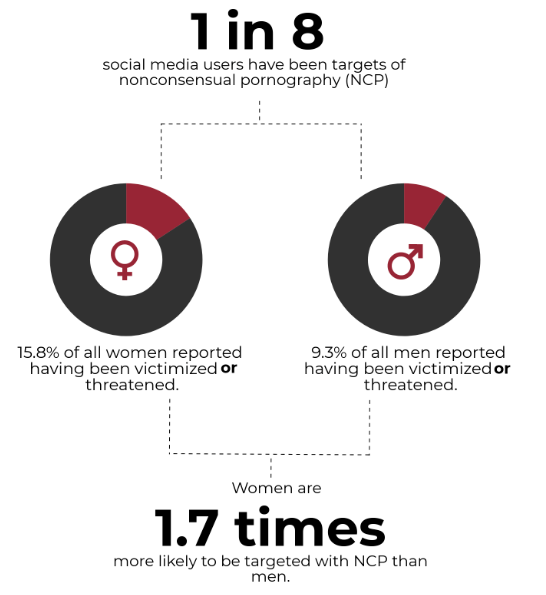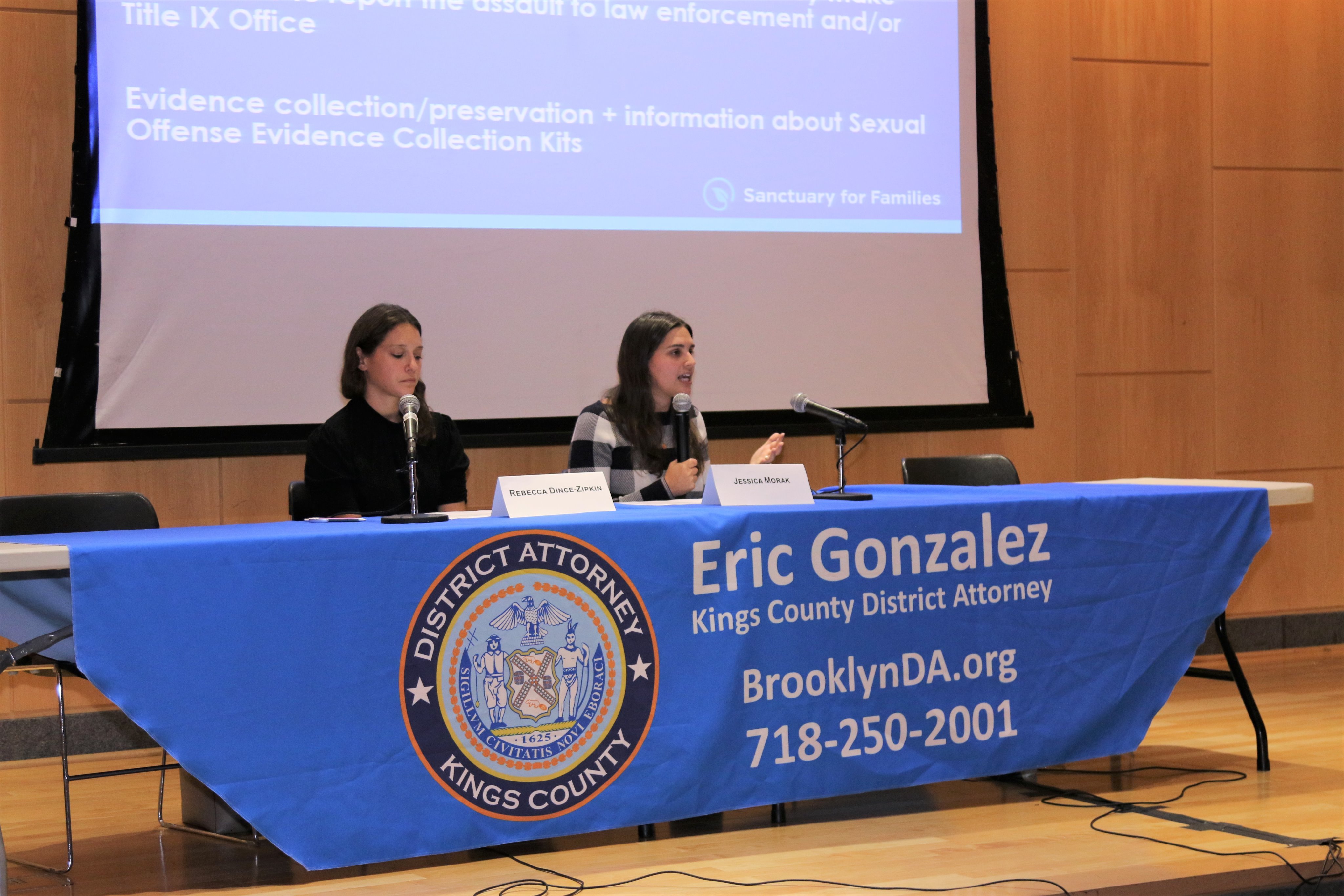Know Your Rights: Cyber Sexual Abuse

Technology has given abusers new ways to harass, intimidate and inflict harm on their victims. One way that an abuser may try to extend their control is by threatening to post intimate photos or videos of the victim on the internet. But what happens when an abuser follows through on that threat? In this Q&A, Jessica Morak, a Staff Attorney at Sanctuary for Families and co-chair of the New York City Cyber Sexual Abuse Task Force, discusses how survivors can fight back against nonconsensual pornography.
What is nonconsensual pornography and what role does technology play in this?
Nonconsensual pornography is a form of gender-based violence called cyber sexual abuse.
Nonconsensual pornography most often refers to the nonconsensual dissemination, or threat of dissemination, of intimate photographs or videos shared without the survivor’s consent. These can be intimate photos or videos that the survivor shared with the abuser during the course of the relationship, those recorded or taken without the survivor’s knowledge, or can be fake photos or videos, otherwise known as “spoofs,” that the abuser themselves created.
Nonconsensual pornography is just one type of cyber sexual abuse. One other type that we often see is when abusers use dating apps or social media platforms to create fake accounts in survivors’ names. Once created, abusers then invite individuals to solicit the survivor for sexual acts, often times by giving out personal and identifying information.
There are many different forms of cyber sexual abuse, but all feature an abuser using technology to exert power and control over the survivor. For this reason, cyber sexual abuse falls under the umbrella term of technology-facilitated abuse. This term appropriately describes the behavior, as it is the abuser’s choice to utilize routine and ordinary technology in a specific and intentional way – to cause harm to another individual.

Source: Cyber Civil Rights Initiative
What are some misconceptions about ‘cyber sexual abuse’ or ‘revenge porn’?
The term “revenge porn” in and of itself illustrates a huge misconception about this form of abuse. “Revenge porn” is a term that has become popular when referring to the nonconsensual sharing of intimate images. Webster’s dictionary defines the word revenge as “to avenge (oneself or another) usually by retaliating in kind or degree” or “to inflict injury in return for.” Therefore, use of the word “revenge” would suggest that the survivor deserved to have their photos or videos shared without their consent as payback for some past wrong. This is nonsense and victim-blaming in its most classic form. The nonconsensual sharing of, or threat to share, intimate videos or photographs is gender-based violence that no one deserves.
People are often confused about what “nonconsensual” in the term “nonconsensual pornography” refers to. The “nonconsensual” refers to the dissemination, or threat of dissemination, of the photographs or videos to others without the survivor’s consent. It does not have anything to do with whether or not the photograph or video was consensually created or taken. If an individual A consensually shares a nude photograph with their partner, B, it is still nonconsensual pornography if B disseminates, or threatens to disseminate, that photograph without A’s consent. It is completely irrelevant that A consented to sharing the photograph with B; the fact that A did not consent to B disseminating to others means that B has engaged in nonconsensual pornography, cyber sexual abuse and gender-based violence.
Another huge misconception when it comes to nonconsensual pornography and other types of cyber sexual abuse is its effect on the survivor. People often react to narratives of this type of abuse with a certain amount of levity and humor, questioning, “what the big deal is” or claiming that the conduct “is just a joke.” But the harm is real, tangible and well documented. According to a 2013 study conducted by the Cyber Civil Rights Initiative:
- 93% of victims reported they had suffered emotional distress as a result of being victimized;
- 82% of victims reported significant impairment in social, occupational, or other important areas of functioning due to being a
victim; and
- 51% of victims reported having had suicidal thoughts as a result of being victimized.
For these very real survivors, cyber sexual abuse is more than just a “big deal.” It is a debilitating type of gender-based violence that has affected them personally, professionally and emotionally.

(L-R) Rebecca Dince-Zipkin, Senior Staff Attorney at Sanctuary for Families, and Jessica Morak, discuss resources available to student survivors of gender-based violence at the Third Annual Symposium on Campus Sexual Assault and Intimate Partner Violence.
What civil or criminal actions can you take if nude photos or videos have been shared without your consent?
If someone has disseminated your intimate photographs or videos without your consent or threatened to disseminate your intimate photographs or videos, you can report this conduct to the police. It is both a state and local crime
(in New York City, Suffolk, and Nassau counties) for which the perpetrator could face arrest and criminal prosecution, often resulting in the survivor being issued an order of protection through Criminal Court.
If you have an eligible relationship with the perpetrator, i.e. you were formerly or are currently married, related by blood or marriage, have a child in common, or were involved in an “intimate relationship,” you could also file for an order of protection in Family Court based upon the cyber sexual abuse.
Additionally, victims of nonconsensual pornography can initiate civil cases (i.e. lawsuits for money damages) against perpetrators. All of these legal options are not mutually exclusive and survivors can choose one, or more than one, of these legal avenues as their pathway to safety and justice.
Is there anything that survivors can do to get intimate photos or videos removed from the internet?
Many websites have mechanisms allowing you to report the photograph or video that was disseminated without your consent. For example, Pornhub, a website that many survivors’ have unfortunately discovered their intimate photographs and videos on, has a specific form that survivors can fill out. Most of these mechanisms can be located by accessing the website’s Help or Support page.
Survivors can also initiate the process to have a takedown notice sent to an internet service provider, requesting that the provider remove specific material because it constitutes copyright infringement (if you took the photograph or recorded the video, you can argue that you have a copyright to it).
Under New York State law, a survivor may also be able pursue an action for a court order against a website that is hosting the material through a special proceeding, pursuant to NY CLS Civ. R. §52-b.
What’s your message to those struggling with cyber sexual abuse?
My message to those struggling with cyber abuse is this: You are not alone. There is an incredible amount of resources available to survivors of cyber sexual abuse. I would encourage anyone who is experiencing this type of abuse or other forms of gender violence to seek help if it is safe to do so. You can call the Sanctuary for Families Legal Helpline at 212-349-6099, Extension 246, where you will be connected with an attorney who can assist you with legal issues, including those related to cyber sexual abuse. We know that this abuse can be difficult to talk about, but you do not have to suffer through this trauma alone. We see you. We hear you. We support you. We believe you and we know this is not your fault.






